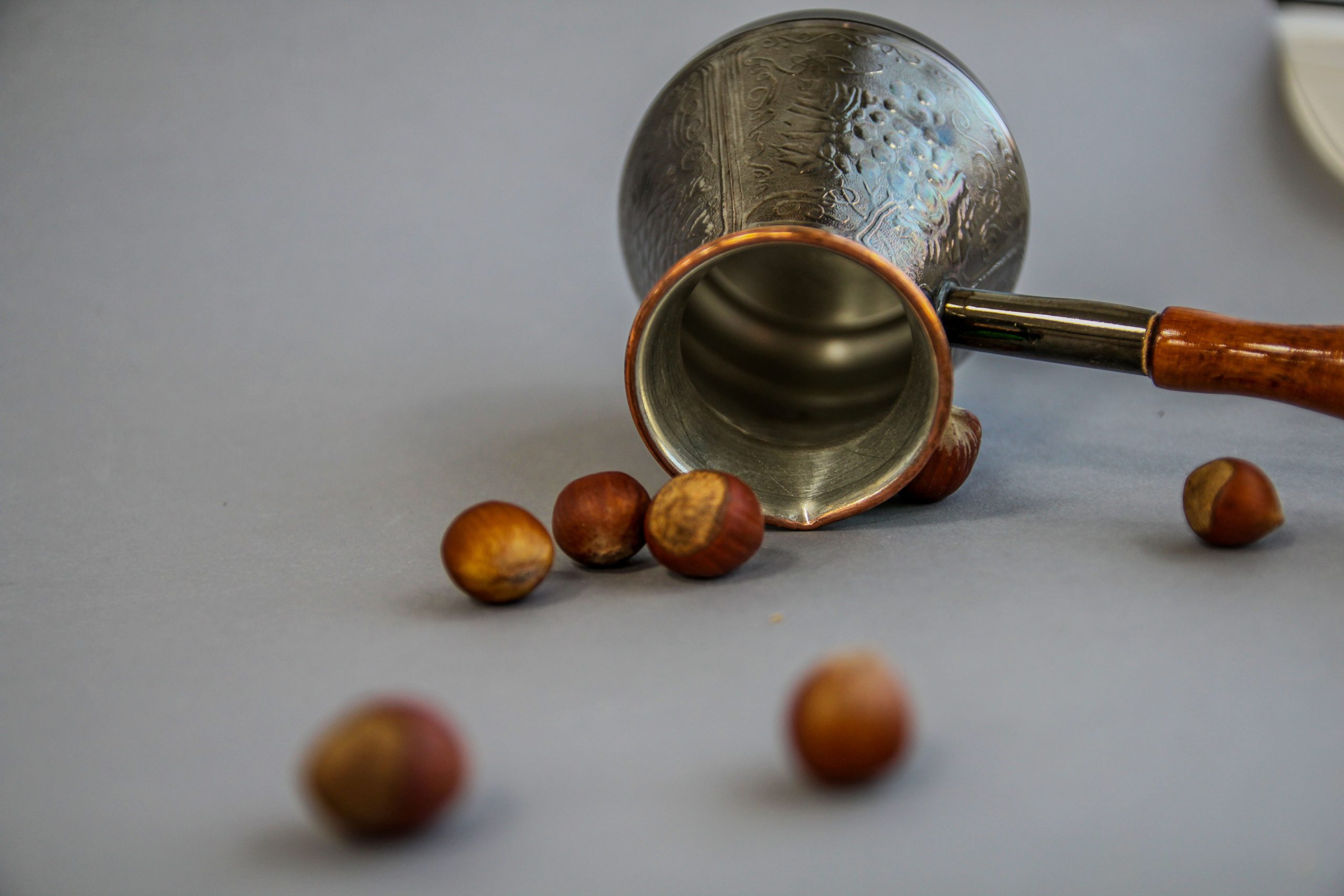Rating of the best cataract drops for 2022
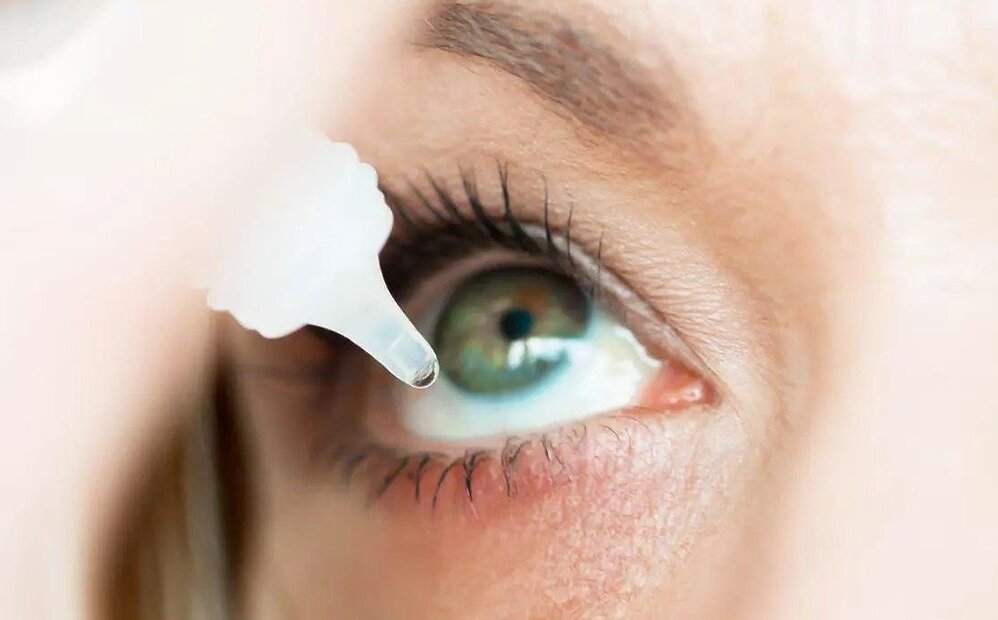
Eye diseases are common among all ages. It is necessary to buy medicines for treatment after consulting a specialist, an ophthalmologist. Considering the rating of the best cataract drops for 2022, you can choose the right option with your doctor.
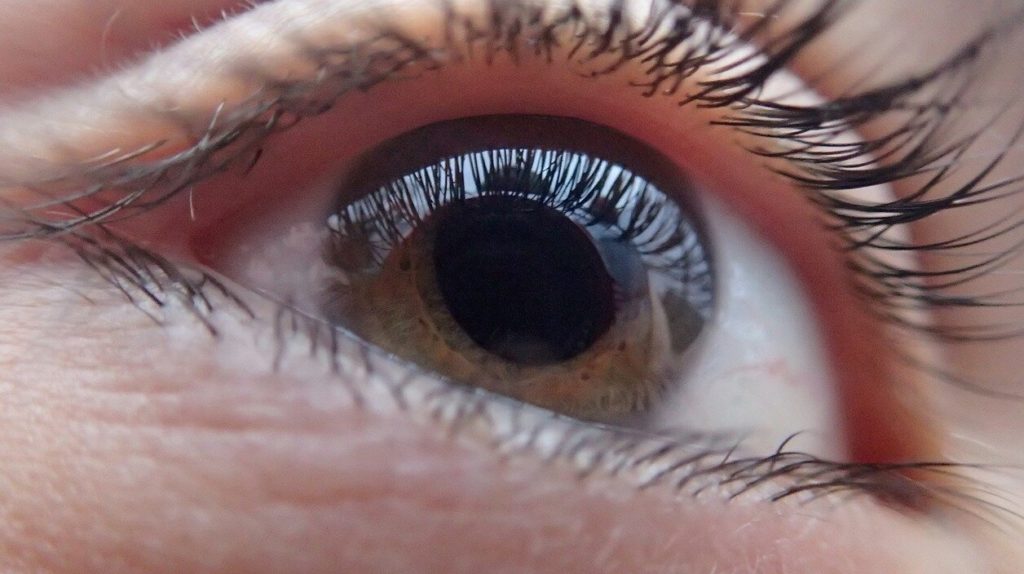
Content
First symptoms
Cataract (from the Greek "kataraktes" - waterfall) - partial, complete damage to the lens, which is located between the iris and the vitreous body. Has the form of an anatomical lens. The main function is the refraction of light rays, projecting the resulting image onto the back wall (retina).
The result of damage is deterioration (objects are seen through a veil, a stream of water) or complete loss of vision.
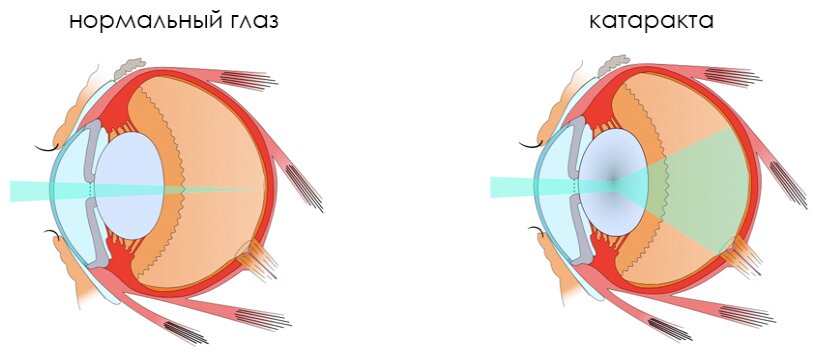
There are different manifestations of visual impairment, which depend on the location of the lesion of the lens. You should immediately consult an ophthalmologist if you have the following symptoms:
- Feeling of fog, veils before the eyes - the image is foggy both near and far.
- Visual impairment at dusk, at night.
- Night glare - light flashes in a dark room, at night.
- Sensitivity to bright light.
- Double vision when one eye is closed (initial stages).
- Temporary improvement in visual acuity: it is clearly visible near, poorly - distant objects (damage to the central part).
- Halos appear near objects.
- The shades of colors (blue, purple) are not distinguished.
- A sharp decrease in sharpness - difficult to read, sew, frequent change of lenses, glasses.
- Black pupil becomes white - late stage.
An accurate diagnosis, determination of the stage, location of the lens lesion will be established by an ophthalmologist.
Several inspection methods are used:
- visual acuity;
- condition of the fundus;
- measurement of intraocular pressure;
- field research.
The main device for biomicroscopy is a light (slit) lamp.
Kinds
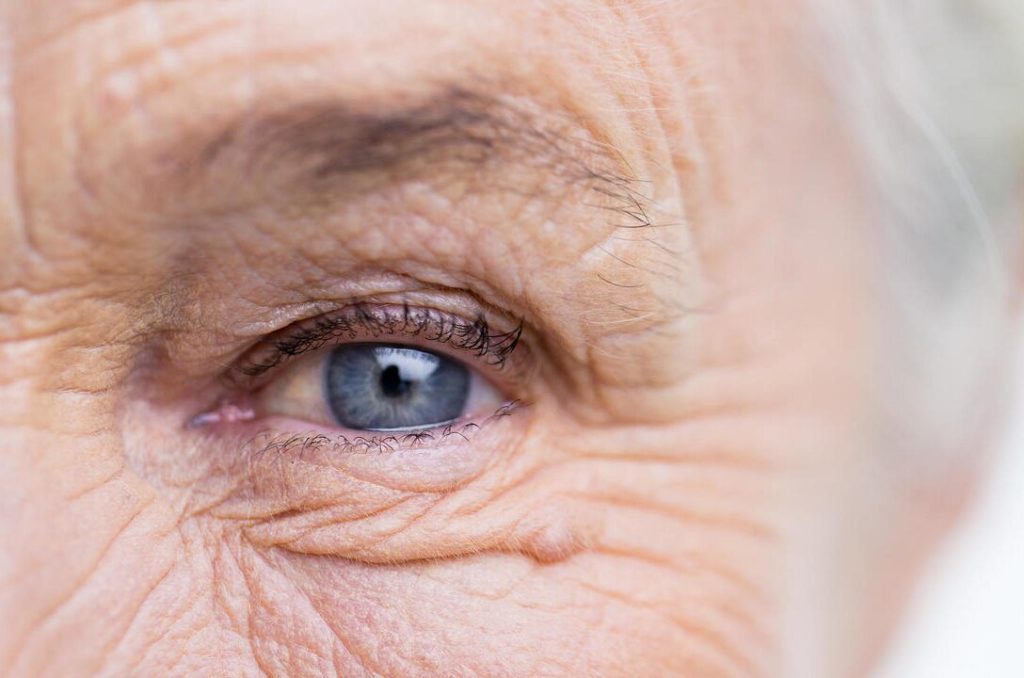
There are several types of the disease, which differ in origin, cause, condition of manifestation:
- Congenital (consecutive).
- Age (senile).
- Traumatic.
- Radiation.
- Toxic.
- Complicated - after ophthalmic (glaucoma, uveitis), endocrine diseases (thyroidism, diabetes mellitus).
The most common group is age groups (88-90%). The traumatic group accounts for 4%, congenital and radiation - 3% each.
According to the location of the damaged area on the lens, types are distinguished:
- cortical - wedge-shaped opacities in the lateral areas;
- anterior polar - white area on the anterior side with clear boundaries;
- posterior polar - a spherical area on the back side;
- layered (zonular) - congenital, alternating cloudy, transparent areas;
- spindle-shaped - has the shape of a spindle;
- nuclear - damaged area of the central part;
- posterior subcapsular - on the back side, typical for young patients;
- total (complete) - damage to the entire area.
The most common variety is cortical, typical for the age type (83-85%).
Age-related cataract is characterized by progressive development. There are 4 forms:
- initial - cloudy areas are not located in the optical zone;
- immature - the central part is damaged, visual acuity decreases;
- mature - complete clouding of the entire area of the lens;
- overripe - white pupil (tissue dissolution).
Clouding of the lens disappears gradually, over 4-15 years.

The reasons
There are many factors that affect the appearance of the first signs of the disease:
- Hereditary causes (genetic predisposition, Down syndrome).
- Infectious diseases during pregnancy (toxoplasmosis, influenza, rubella).
- Endocrine disorders (diabetes mellitus, thyroid pathology).
- Severe forms of smallpox, malaria.
- Metabolic disorders (lens tissues).
- Prolonged use of alcohol, cigarettes.
- The influence of the bright sun, wearing low-quality sunglasses.
- Injuries of the organs of vision.
According to statistics, more than 22 million of the world's population have a pathology of the lens. The disease depends on age, gender. Elderly people after 80 years - 90% of cases. Women get sick more often than men: 45% of women and 24% of men after 70 years.
Treatment
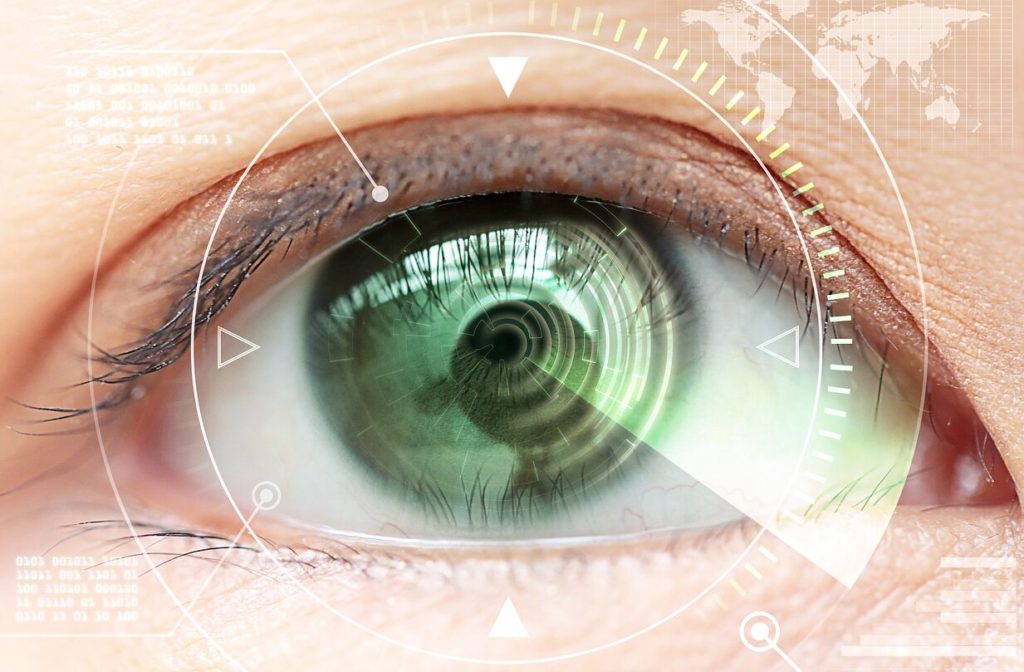
Specialists use medical, surgical methods (replacement of the lens).
The drug method is the use of eye drops, the components of which improve metabolic processes in the tissues of the eye, relieve inflammatory manifestations, and stop the development of the disease. Modern drugs do not completely cure cataracts. Before buying, a consultation with an ophthalmologist is required.
Surgical (operative) method - replacement of the lens with an intraocular lens (IOL) during surgery. The name of the operation is ultrasonic cataract phacoemulsification (UZFEK).
The operation is performed under local anesthesia, the time is 15-20 minutes. Advantages: suitable for all age groups, does not affect the functioning of the cardiovascular system, no severe complications, short rehabilitation.
lenses
Modern lenses have a yellow filter that protects against UV rays.
There are also several types of IOLs:
- Monofocal - high acuity at a certain distance (near or far).
- Toric - has a special shape, eliminates the symptoms of astigmatism.
- Multifocal - good vision at different distances.
IOL selection is carried out only by an ophthalmologist using specialized equipment, biometric devices. The device calculates the individual parameters of the eye - the length of the axis, the depth of the anterior chamber, the radius of curvature.According to the data obtained, an artificial lens (IOL) is selected.
Contraindications for surgery
There are limitations to any surgical intervention:
- high intraocular pressure;
- eye infections;
- diabetes mellitus (severe stages);
- lactation period, pregnancy;
- some types of cancer;
- exacerbation of diseases, multiple sclerosis.
With contraindications to the replacement of the lens - the appointment of drugs that reduce the symptoms of diseases, the normalization of indicators (pressure, sugar level).
Prevention
Deterioration of vision, clouding of the lens is accompanied by diseases of the endocrine system, metabolic disorders of proteins, lipids, carbohydrates, unfavorable living conditions. Often manifested in old age, after eye injuries (bruises, concussions).
To reduce the likelihood, the rate of cataracts will help tips:
- Preventive examination by an ophthalmologist.
- Annually - medical examination, testing (control of the endocrine glands).
- Protect your eyes from harmful UV rays by wearing certified glasses.
- Healthy eating - a large number of greens, fruits, berries, seasonal vegetables on the menu.
- Walks in the open air.
- Refusal of smoking, alcohol.
When choosing medicines after consulting an ophthalmologist, you should pay attention to:
- package integrity;
- information about the terms, conditions of storage;
- manufacturer's quality certificate;
- the amount of the drug, the number of instillations per day;
- presence of contraindications.
Medicines are over-the-counter, prescription. You can buy the right product in stationary pharmacies, online stores with delivery.
Rating of the best cataract drops for 2022
The review of popular drugs is based on reviews among buyers of well-known online pharmacies, Yandex Market.
Budget (from 10 to 130 rubles)
1 place Taurine drops Ch. 4% 10ml №1 (fl-cap)
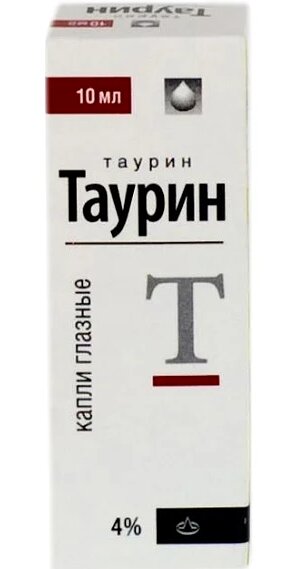
Price: 12-15 rubles.
Producer - the company "LEKKO" (Russia).
The active ingredient is taurine (a sulfur-containing amino acid). Functions: improvement of metabolic processes in eye tissues, restoration of cell membranes.
Application: different types of cataracts, injuries, corneal dystrophy. Additional use in the treatment of glaucoma (primary open-angle) is possible.
Buried 2-4 times a day, 1-2 drops. Course - 3 months. Repeated application - in a month.
Packing - polyethylene dropper, cardboard box. On a white background, the name of the drug, composition, and storage instructions are indicated.
Shelf life - 3 years. Conditions: at room temperature, dark place. Age - after 18 years.
Over-the-counter remedy.
- analogue of expensive drugs;
- price;
- convenient bottle;
- relieves fatigue, pain.
- cover is hard to open.
2nd place Taufon drops Ch. 4% fl-cap. 10 ml

Cost: 115-131 rubles.
The manufacturer is the Russian company Moscow Endocrine Plant.
Colorless, transparent liquid. The active substance is Taurinum (taurine), 4% solution.
prescribed for different types of cataracts, corneal damage, additional treatment for primary glaucoma.
Application: 1-2 drops in each eye 2-3 times a day. Course - 3 months. Re-appointment is possible after 1 month.
Polyethylene translucent dropper-case has a screw cap. Sold in a cardboard box, decorated in white and blue.
Contraindications - age up to 18 years, pregnancy, lactation.
Storage - 3 years, in a dark place at room temperature.
- relieve redness, fatigue;
- convenient bottle;
- price.
- slight burning sensation immediately after instillation.
3rd place Taurine drops Ch. 4% 10ml №1
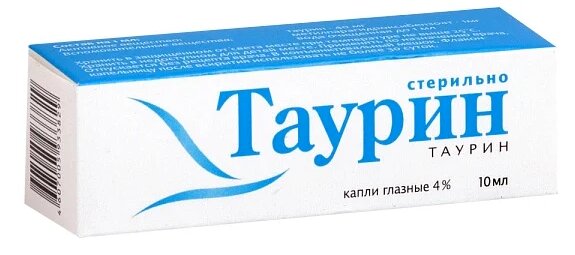
Price: 11-25 rubles.
The manufacturer is Slavyanskaya Apteka LLC (Russia).
OTC drug.
Release form - drops. Colorless transparent liquid, a yellowish tint is allowed.
The main component is taurine.
Purpose: all types of cataracts, deformation, trauma of the cornea.
Not recommended: age under 18, allergic reactions, lactation, pregnancy.
Packaging: cardboard box (blue font, white background), plastic bottle.
The term of use is 3 years.
- low price;
- relieve pain;
- remove redness.
- not found.
4th place Taurine-solofarm drops Ch. 4% 0.4ml №20
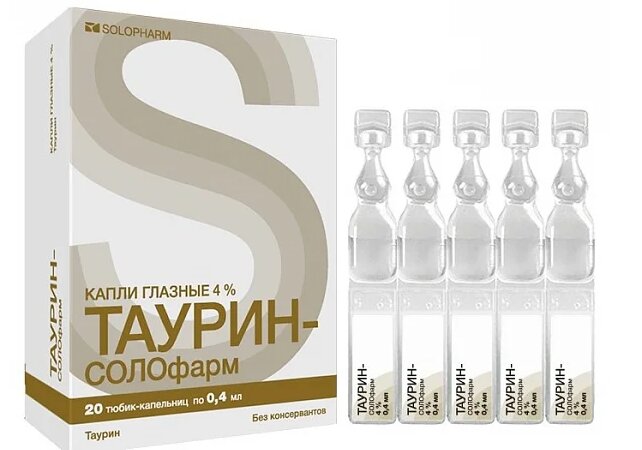
Cost: 65-77 rubles.
Producer - LLC "Groteks" (Russia).
Drops are a clear liquid. The main component is taurine (1 ml of solution - 40 mg).
Appointment - with damage to the cornea, open glaucoma.
Packaging - cardboard box - white background, beige-brown font. The box contains 20 disposable tubes.
Contraindications: age up to 18 years, allergic manifestations.
Storage - 3 years, at temperatures up to 25 C.
- disposable tubes;
- without preservatives;
- low cost.
- not identified.
Average prices (from 200 to 600 rubles)
1 place Catalin tab. d / adj. ch. cap. 0.75 mg #1
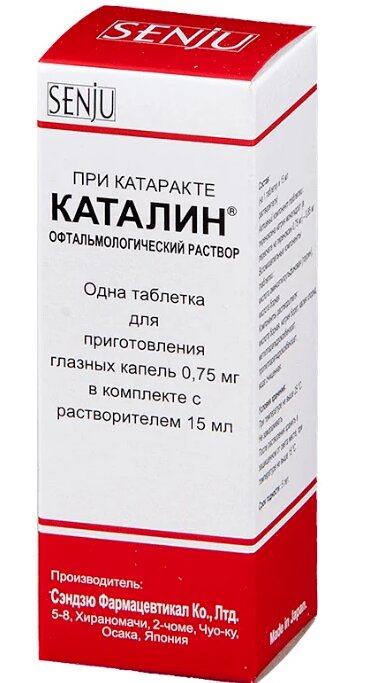
Cost: 423-521 rubles.
Manufactured by Sandzu Pharmaceutical Co.Ltd (Japan).
Prescription drug.
Feature - the preparation of the solution (dissolution of the tablet). Release form - 1 tablet (750 mcg), solvent (15 ml). Use the resulting solution within 30 days.
The active substance is Pirenoxinum (pyrenoxine). Solvent - purified water (13-15 ml), boric acid (180 mg), potassium chloride (24 mg).
Purpose: early stages of cataract (senile, diabetic), age - after 18 years.
Application: 5-6 times a day, 1-2 drops. The duration of the course of admission is 2-3 months.
Side effects - burning, itching, blepharitis.
Shelf life of the solution - 1 month, dark place, temperature - up to 15 C.
- convenient to press;
- the veil is scattered;
- improves contrast;
- relieves fatigue, pain.
- individual reactions are possible.
2nd place Oftarint Ch. drops fl. 10 ml
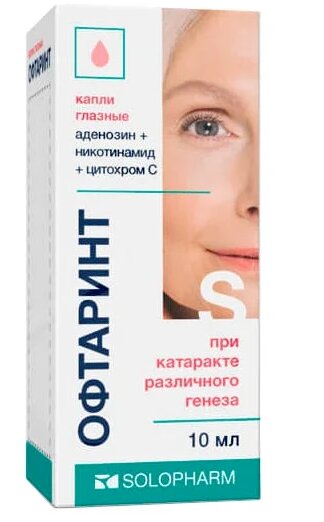
Cost: 327-410 rubles.
The drug was manufactured by Groteks (Russia).
OTC product.
Packaging - plastic dropper case, lid (first opening control), cardboard box.
Consists of a complex of drugs:
- Adenosine (2.0 mg).
- Nicotinamide (20 mg).
- Cytochrome C (0.675 µg).
Action - improvement of metabolic, regenerative processes in the tissues of the lens.
Drip 2-3 times a day, 1-2 drops.
Storage: 3 years (unopened), 1 month (after opening) at 2-8⁰С.
- three components;
- increases the absorption of drugs;
- removes the inflammatory process.
- should not be given to children, adolescents under 18 years of age.
3rd place Broksinak cap. ch. 0.09% vials, 2.5 ml
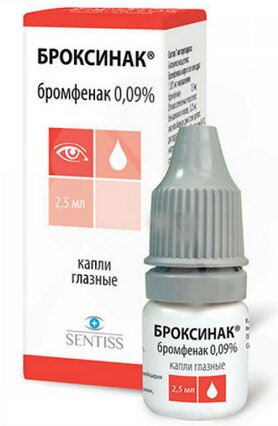
Price: 610-671 rubles.
The manufacturer is the Indian company Sentiss Pharma Pvt.Ltd.
Produced in a white bottle, gray cap, white box background, red, black fonts.
The main component is bromfenac (NSAIDs - non-steroidal anti-inflammatory drug).
Functionality: reduction of inflammation, reduction of pain after surgery (extraction).
Prescription drug.
Reception: 1 time per day, 1 day before surgery, 14 days after surgery.
Storage: a place inaccessible to children, temperature - 15-25⁰С.
- postoperative period;
- inflammation prevention;
- anesthetizes;
- practical nose;
- there is protection against the first opening.
- individual reactions are possible;
- children, adolescence.
Conclusion
Any medications can be bought, used only after consultation with the attending physician, family therapist, narrow specialist. Drops from cataracts will not cure completely, but will help to stop the course, relieve unpleasant symptoms. By studying the rating of the best cataract drops, it is possible to buy the most suitable option.
new entries
Categories
Useful
Popular Articles
-

Top ranking of the best and cheapest scooters up to 50cc in 2022
Views: 131651 -

Rating of the best soundproofing materials for an apartment in 2022
Views: 127690 -

Rating of cheap analogues of expensive medicines for flu and colds for 2022
Views: 124519 -

The best men's sneakers in 2022
Views: 124033 -

The Best Complex Vitamins in 2022
Views: 121939 -

Top ranking of the best smartwatches 2022 - price-quality ratio
Views: 114980 -

The best paint for gray hair - top rating 2022
Views: 113395 -

Ranking of the best wood paints for interior work in 2022
Views: 110318 -

Rating of the best spinning reels in 2022
Views: 105329 -

Ranking of the best sex dolls for men for 2022
Views: 104366 -

Ranking of the best action cameras from China in 2022
Views: 102215 -

The most effective calcium preparations for adults and children in 2022
Views: 102011
